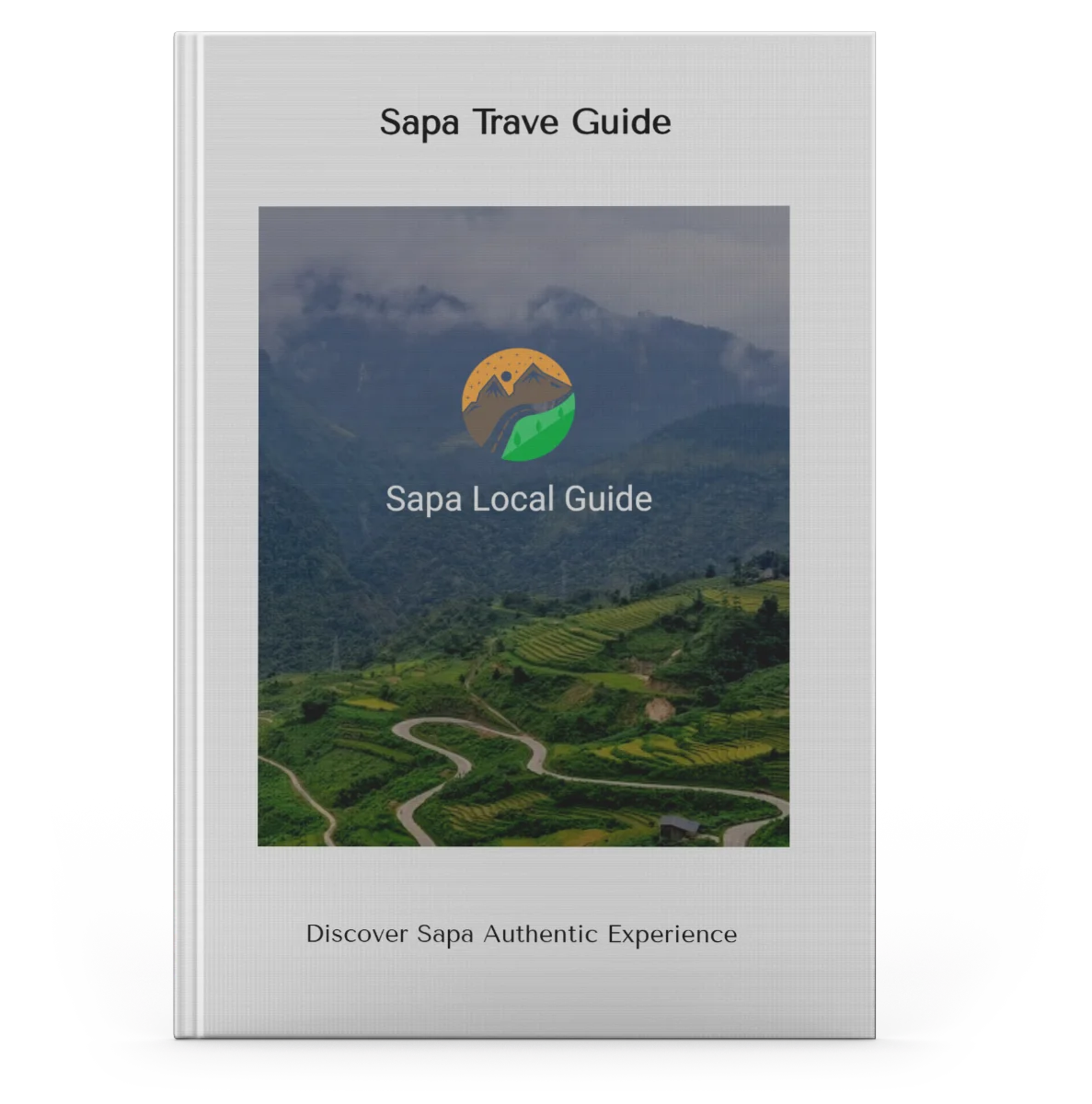![]()
Authentic Experience of Sapa
Sapa Local Trekking Tour Alone – Explore traditional villages, rich culture, and stunning terraced rice fields on a solo adventure!

Choosing to embark on a solo trekking tour in Sapa presents a unique blend of adventure and introspection. The region's breathtaking landscapes and rich cultural tapestry provide a backdrop for personal exploration and connection with local communities. However, navigating this experience requires thoughtful preparation and awareness of safety and cultural nuances. As you consider this journey, the following insights will illuminate the essential aspects of local tour trekking alone in Sapa, ensuring that your adventure is both enriching and memorable. What awaits you on the trails may surprise you.

A breathtaking vista unfolds, showcasing verdant rice terraces cascading down misty mountains. In the foreground, a solitary figure, clad in vibrant trekking gear, stands poised on a narrow path, absorbing the serene beauty around them. Soft rays of sunlight filter through the clouds, illuminating the lush greenery while distant, rugged peaks loom majestically. The air is alive with tranquility, inviting adventure and reflection, encapsulating the essence of solo exploration in the enchanting landscapes of Sapa.
Sapa stands out as an exceptional destination for solo trekking enthusiasts seeking both adventure and cultural immersion. Nestled in the northern mountains of Vietnam, Sapa offers breathtaking landscapes and a rich tapestry of local culture. Trekking through the lush terraced rice fields and towering peaks, solo travelers can connect with nature while exploring the vibrant traditions of the indigenous communities.
Choosing a Sapa local guide enhances this experience significantly. These knowledgeable guides provide invaluable insights into the intricate customs and daily lives of the local people, ensuring that your Sapa local tour is both informative and transformative. They can tailor the Sapa local trekking tour to suit your interests and fitness level, allowing you the freedom to explore hidden trails and scenic vistas at your own pace.
Moreover, the diverse trekking routes cater to all levels of adventurers, from leisurely walkers to seasoned hikers. Engaging with the local culture and participating in village activities fosters a deeper understanding of the region's heritage. Embrace the opportunity for self-discovery and exploration that Sapa offers, making it an ideal choice for solo trekking enthusiasts eager to experience authentic adventure.
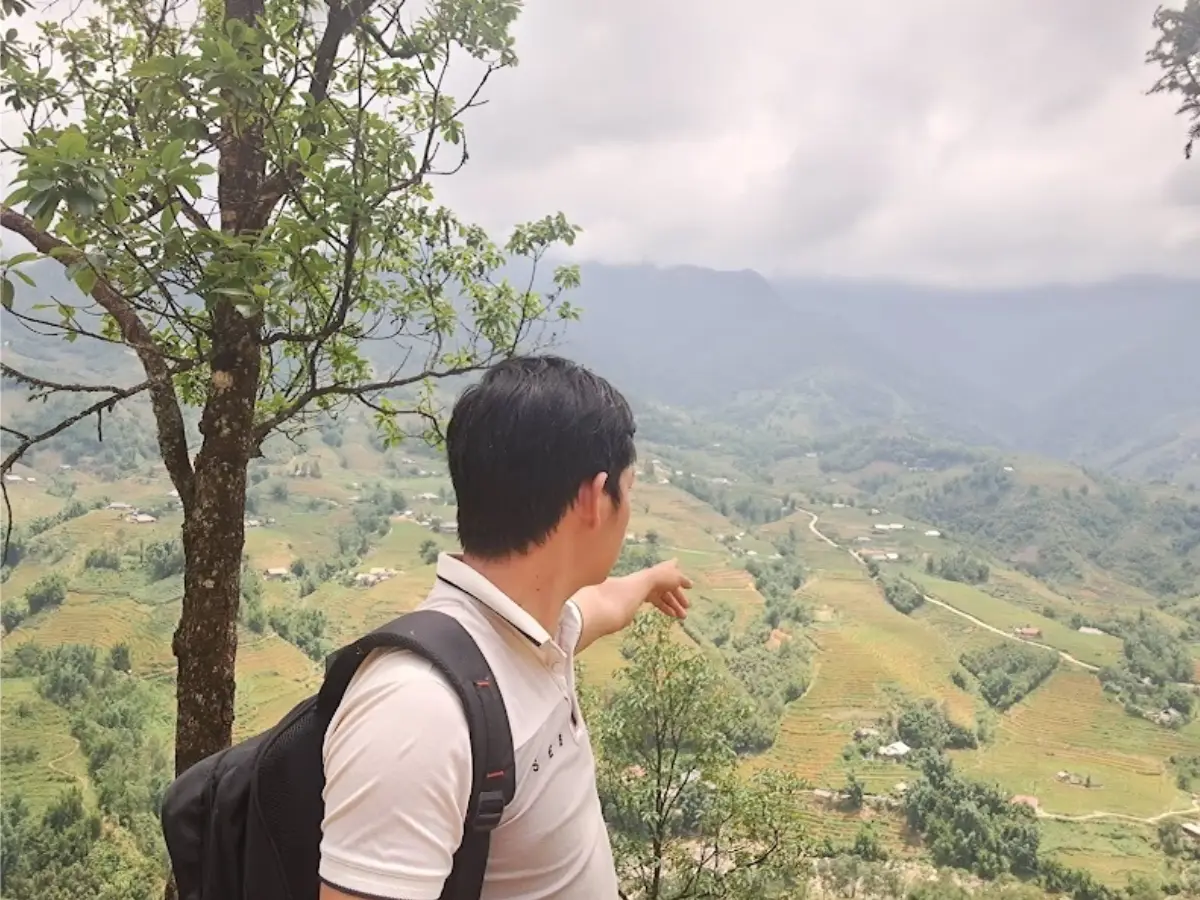
A breathtaking landscape unfolds, showcasing lush terraced rice fields cascading down misty mountains. A solitary figure, clad in vibrant local attire, navigates a winding path surrounded by emerald greenery. Soft sunlight filters through the clouds, illuminating the scene with a warm glow. In the distance, majestic peaks rise, their tips kissed by wispy clouds, hinting at the beauty of Sapa in early autumn—a time when the scenery transforms into a painter's palette of gold and green.
When is the ideal time to experience the enchanting beauty of Sapa? The answer largely depends on your preferred climate and activities. Generally, the best months to visit Sapa are from September to November and March to May. During these periods, the weather is mild and the landscapes are vibrant, offering ideal conditions for trekking and exploration.
In September and October, the rice terraces are at their most stunning, adorned with golden hues as the harvest season approaches. This is a visual feast for photographers and nature lovers alike. Conversely, March to May welcomes the blooming of flowers, infusing the region with vibrant colors and fragrant scents, creating a picturesque backdrop for your adventures.
While winter months, particularly December to February, can be chilly and misty, they are also less crowded, providing a sense of solitude for those seeking a more introspective experience. Summer months, June to August, bring heavy rainfall, which can hinder trekking but also transform the landscapes into lush, green wonderlands.
Ultimately, the best time to visit Sapa aligns with your desire for exploration and connection with nature. Choose wisely, and let the beauty of Sapa unfold before you.
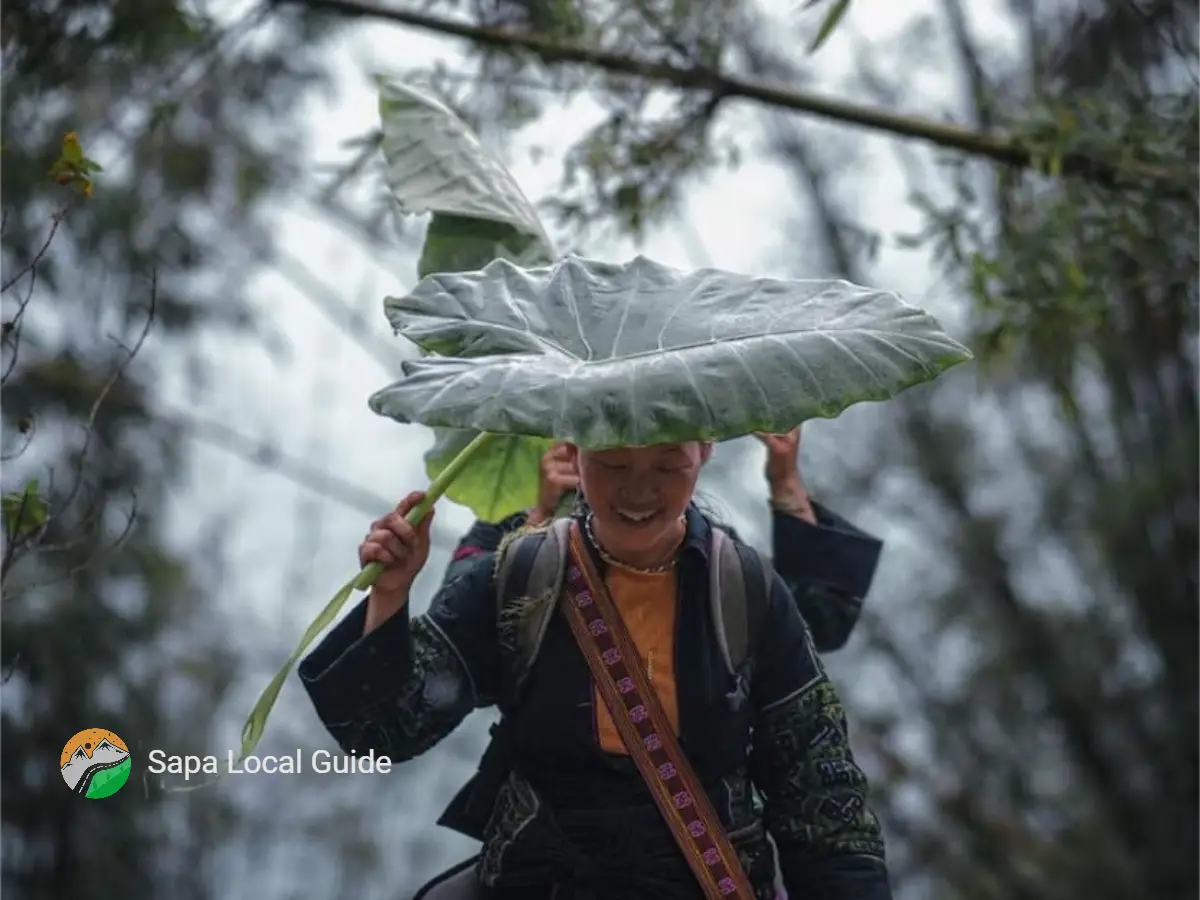
A solitary traveler stands at the edge of a lush, terraced rice field, surrounded by vibrant green hills under a clear blue sky. The sun casts a warm glow, highlighting the sturdy hiking boots, a well-worn backpack filled with essential gear, and a water bottle glistening in the light. Nearby, a walking stick leans against a towering bamboo stalk, while the distant silhouettes of local villages peek through the mist, evoking a sense of adventure and tranquility.
Embarking on a Sapa local trekking Hidden trails tour adventure in Sapa requires careful preparation, and having the right gear can significantly enhance your experience. First and foremost, invest in a sturdy pair of trekking shoes. Waterproof, breathable footwear will provide comfort and protection against the unpredictable weather and rugged terrain.
Next, consider layering your clothing. A moisture-wicking base layer, an insulating mid-layer, and a waterproof outer shell will help you adapt to varying temperatures and conditions throughout your trek. Don't forget a wide-brimmed hat and sunglasses for sun protection.
A lightweight daypack is essential for carrying your essentials, including hydration supplies. A reusable water bottle or hydration system will keep you hydrated, while energy snacks like nuts or dried fruits will keep your energy levels up.
Additionally, a compact first-aid kit, a reliable map or GPS device, and a flashlight are crucial for safety and navigation. Finally, pack a lightweight, quick-dry towel for any encounters with rain or stream crossings. By equipping yourself with the right gear, you can embrace the freedom of exploration and fully immerse yourself in the stunning landscapes Sapa has to offer.
A solitary figure, clad in vibrant trekking gear, strides along a narrow, winding path through lush green rice terraces in Sapa. Mist drapes over distant peaks, softening their rugged edges. The sun casts a gentle glow, illuminating the rich earth tones of the trail. Wildflowers dot the landscape, adding splashes of color. The trekker pauses, inhaling the fresh mountain air, surrounded by nature's serenity, reflecting the quiet strength found in navigating the trails alone.
Navigating the trails alone in Sapa can be a rewarding yet challenging experience. As you embark on this journey, the freedom to explore at your own pace is liberating, allowing you to connect with nature on a personal level. However, it is essential to approach these trails with respect and preparation.
Start by familiarizing yourself with the trail maps and local geography. Sapa's terrain is diverse, featuring steep hills, lush rice terraces, and winding paths. Investing in a reliable GPS device or a detailed map can be invaluable, ensuring you stay on course while embracing the spontaneity of your adventure.
Time management is crucial; daylight hours are limited, and getting lost could result in navigating treacherous paths after dark. Establish a turnaround time to ensure you have ample sunlight for your return journey. It is also wise to inform someone of your plans, adding a layer of safety to your solo trek.
Ultimately, the thrill of exploring Sapa's breathtaking landscapes alone can lead to self-discovery and moments of reflection, but always remain vigilant and prepared to fully embrace this unique experience.

A solo trekker, clad in a vibrant blue jacket, stands on a verdant hillside overlooking Sapa's terraced rice fields, their golden hues contrasting with the lush green. In the distance, a group of local women in traditional attire, adorned with intricate patterns, engage in a lively conversation, smiles illuminating their faces. Wispy clouds drift lazily above, while a golden sun begins to set, casting a warm glow over this picturesque scene of cultural connection and natural beauty.
Exploring Sapa's trails often leads to encounters with the local communities that enrich the trekking experience. These interactions provide a unique opportunity to engage with the vibrant cultures and traditions of the ethnic minorities that inhabit this stunning region. Immersing yourself in their way of life can be profoundly rewarding, allowing you to gain insights that transcend conventional tourism.
Here are four meaningful ways to interact with local communities:
These interactions not only enrich your trekking experience but also promote sustainable tourism, benefiting both travelers and local communities alike.
A lone traveler navigates winding trails through lush green rice terraces, their vibrant emerald hues contrasting against the rich, earthen browns of the soil. Mist drapes over majestic mountains in the distance, softening the landscape's edges. The sun casts a golden glow, illuminating the intricate patterns of the terraces. Nearby, a traditional wooden stilt house peeks through the foliage, hinting at the local culture. The scene captures a moment of serene exploration in Sapa's untouched beauty.
In Sapa, breathtaking landscapes and rich cultural heritage come together to create a myriad of must-see attractions that captivate every traveler. The terraced rice fields, sculpted over generations by the local ethnic communities, are a stunning visual testament to sustainable agriculture and artistry. A trek through these emerald hills not only offers awe-inspiring views but also a chance to connect with the traditions of the Hmong and Dao people.
Another highlight is Fansipan, the highest mountain in Vietnam, often referred to as the “Roof of Indochina.” Adventurous souls can hike or take a cable car to its summit, rewarding themselves with panoramic vistas that stretch across the horizon.
The quaint streets of Sapa town are dotted with vibrant markets, where local crafts and textiles await discovery. The Sapa Market is a cultural hub, bustling with activity and offering a glimpse into the daily lives of its inhabitants.
Lastly, the Silver Waterfall and Love Waterfall provide serene escapes into nature, ideal for those seeking tranquility amidst their explorations. Each attraction in Sapa invites you to embrace freedom, encouraging a deeper appreciation for both nature and culture.
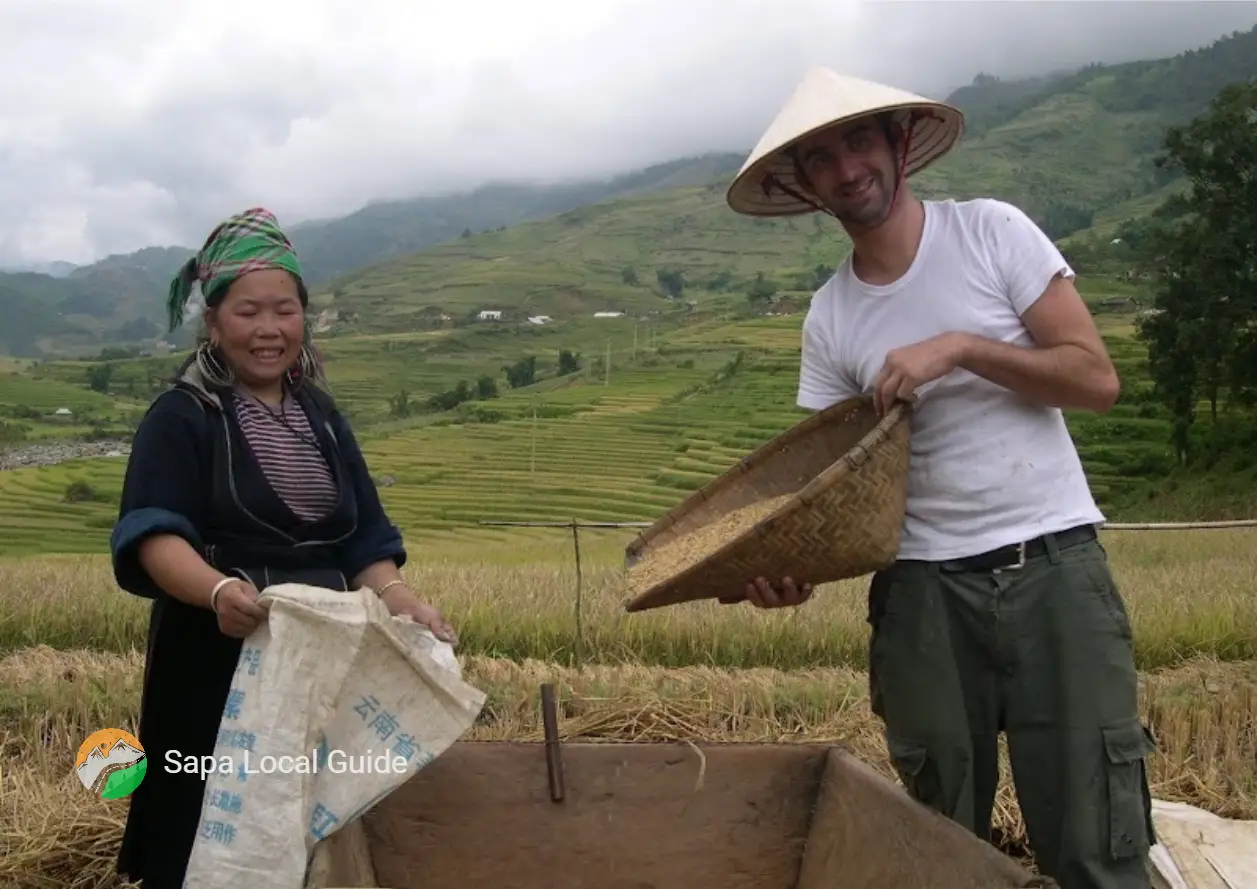
A breathtaking view captures a solitary figure trekking along a lush, winding path in Sapa. Towering rice terraces cascade down emerald hills, framed by misty mountains in the distance. The trekker, equipped with a vibrant red backpack, pauses to admire the scenery, a map clutched in hand. Nearby, a wooden signpost marks the trail, while a gentle breeze rustles through vibrant wildflowers, hinting at both beauty and the importance of safety in this serene wilderness.
When embarking on a solo trekking adventure in Sapa, prioritizing safety is essential to ensure a rewarding experience. The lush landscapes and cultural richness of the region beckon, but being prepared will enhance your journey.
Here are four crucial safety tips for solo trekkers:
Sapa 1 Day

1 day experience,Rice fields, valley, villages. Moderate to challenging, Private,Vegan-friendlyCultural immersion & active adventure
Motorbike Tour

1 day experience,Rice fields,waterfall.Challenging,Private tours friendly Cultural immersion, active adventure
Sapa 2 Days

2 days 1 night experience. Moderate to challenging, adventure. Mountains, valleys, rice fields and villages. Vegan-friendly
Sapa 3 Days

3 days 2 night experienc, Moderate to challenging. Mountains, valley, rice fields & villages. Private tours. Vegan-friendly
A lone traveler, clad in earth-toned trekking gear, navigates a winding path through vibrant green
. Wisps of fog hover over distant mountains, creating a serene backdrop. Local women in traditional attire, adorned with intricate patterns, smile warmly as they weave baskets nearby. The traveler pauses, hands clasped respectfully, embodying cultural sensitivity. Sunlight filters through the trees, casting gentle shadows that enhance the tranquil atmosphere of this remote Sapa landscape.
Understanding and respecting cultural etiquette is vital for a fulfilling experience while trekking in Sapa, as it not only enhances interactions with local communities but also fosters mutual respect. Visitors should be mindful of the local customs and traditions to ensure harmonious relationships with the indigenous peoples.
One essential practice is to greet locals with a warm smile and a simple “Xin chào,” which translates to “Hello.” This gesture shows appreciation and openness to connection. Additionally, when visiting homes, it is polite to remove your shoes before entering, demonstrating respect for the household.
Photography is another area requiring sensitivity; always ask for permission before taking pictures of individuals, especially children, to honor their privacy. Furthermore, when involved in local markets, haggling is common, but do so politely and tactfully to maintain a positive atmosphere.
Dress modestly and comfortably, avoiding revealing clothing, which may be deemed inappropriate in rural settings. Lastly, be respectful of spiritual sites and practices, refraining from loud behavior or disruptive actions. By adhering to these cultural etiquettes, trekkers can enrich their experience while contributing positively to the community's cultural fabric.
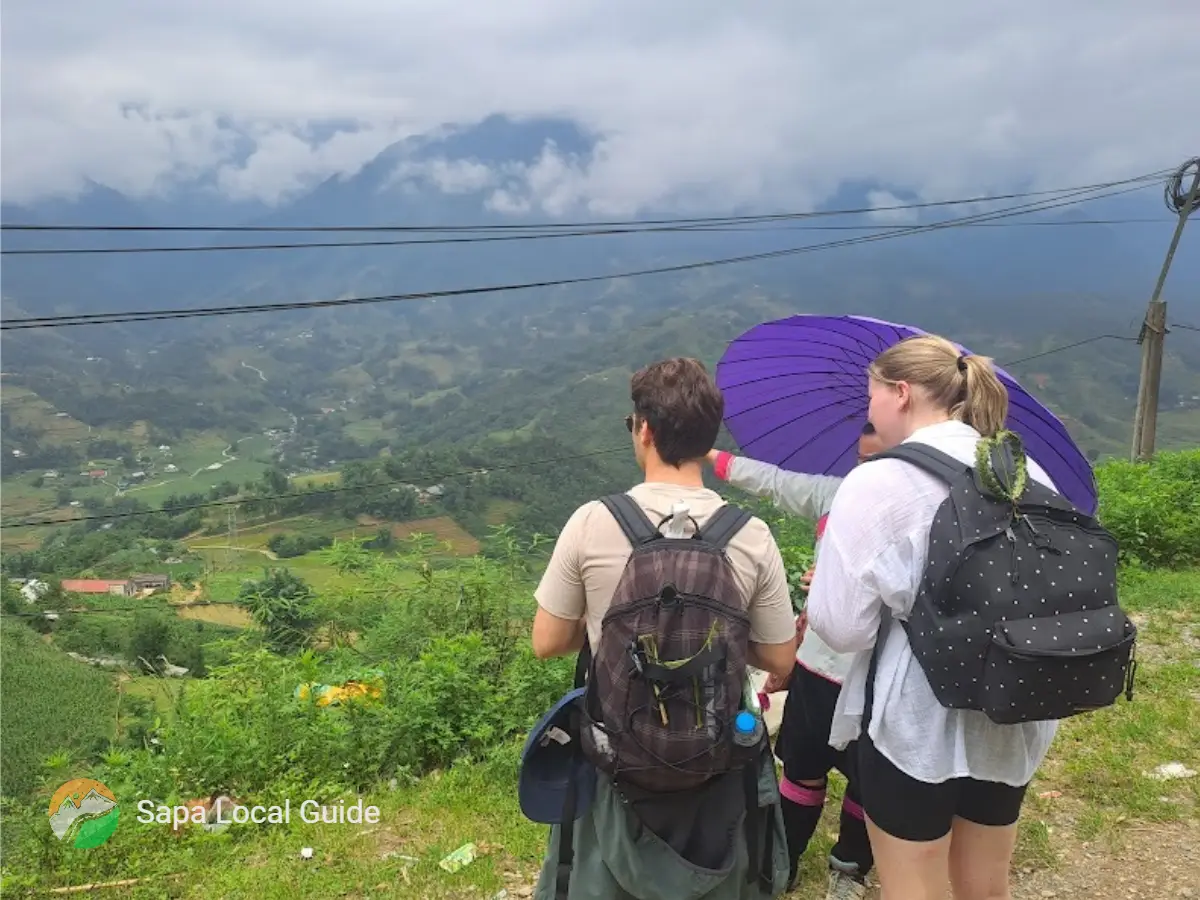
A winding trail cuts through lush green rice terraces, glistening under the soft morning light. In the foreground, a solitary hiker, clad in vibrant trekking gear, pauses to admire the breathtaking panorama of misty mountains layered in shades of blue and green. The sky, painted with soft pastels, hints at dawn's embrace. Surrounding wildflowers burst with color, while distant villages dot the landscape, inviting exploration. The scene captures the essence of solitude and adventure in Sapa's enchanting wilderness.
Exploring the stunning landscapes of Sapa offers a unique opportunity to engage with the region's rich cultural heritage. The breathtaking vistas, vibrant terraced rice fields, and traditional villages make it an ideal destination for trekking enthusiasts seeking both adventure and connection with nature. Below are four recommended trekking routes that capture the essence of Sapa:
Each of these routes invites you to embrace the freedom of exploration while connecting with the natural beauty and cultural richness of Sapa.
A rugged backpack rests against a weathered wooden fence, its vibrant colors contrasting with the lush green rice terraces beyond. Sunlight dapples the scene, illuminating the intricate patterns of the landscape. A pair of sturdy hiking boots sits nearby, caked in earthy soil, suggesting an imminent adventure. In the distance, mist-cloaked mountains rise majestically, hinting at the challenges that await. The air is crisp, filled with anticipation and the promise of exploration in Sapa‘s enchanting wilderness.
As you prepare for your trekking adventure in Sapa, it is essential to equip yourself with the right gear and knowledge to ensure a safe and enjoyable experience. Begin by selecting appropriate footwear; sturdy, water-resistant hiking boots will provide the support and traction needed for varying terrain.
Layered clothing is crucial, as temperatures can fluctuate dramatically throughout the day. Opt for moisture-wicking fabrics to keep you comfortable, and don't forget a lightweight rain jacket. A good quality backpack will help distribute weight evenly, allowing for easy movement during your trek.
Bring along essential items such as a first aid kit, a reusable water bottle, and energy-boosting snacks. Familiarize yourself with the trekking routes and local customs, ensuring you respect the environment and the communities you encounter.
Lastly, consider downloading offline maps or trekking apps to guide you. Embrace your desire for freedom by immersing yourself in the breathtaking landscapes of Sapa, while remaining prepared for the unexpected. With the right preparation, your trekking adventure can become a truly liberating experience that leaves you with cherished memories.
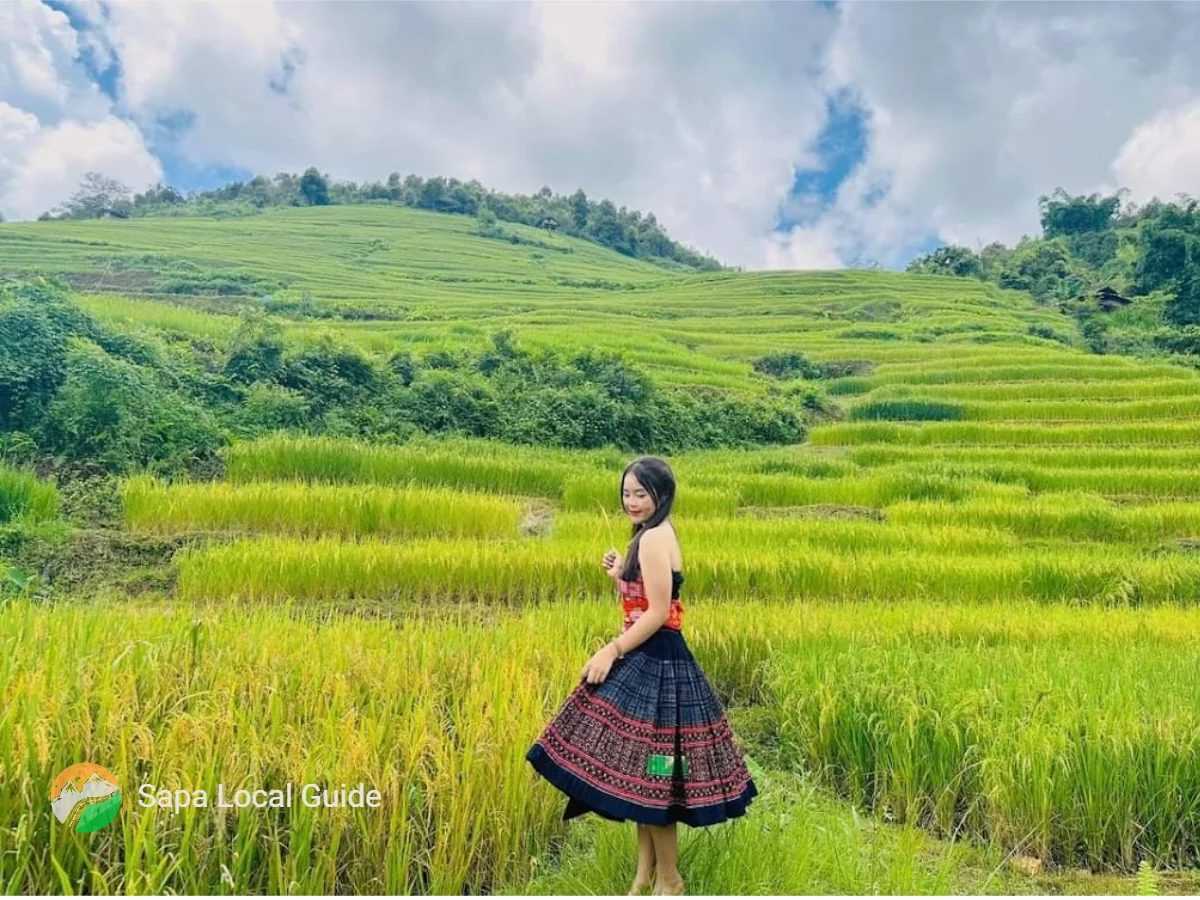
Trekking alone in Sapa can be an exhilarating experience, with over 70% of trekkers reporting encounters with breathtaking landscapes. However, solo adventurers should remain cautious, ensuring they are well-prepared and aware of their surroundings for safety.
Yes, numerous guided tours cater specifically to solo trekkers, providing structured itineraries and local expertise. These tours offer a balance of independence and safety, allowing individuals to explore breathtaking landscapes while benefiting from professional guidance and support.
The average cost for a solo trekking trip in Sapa typically ranges from $30 to $100 per day, depending on factors such as accommodation, meals, and guide services, allowing for a personalized and enriching experience.
Yes, food and accommodations are readily available during treks. Local villages offer authentic dining options and guesthouses, ensuring a comfortable experience while allowing for exploration of the stunning landscapes and rich cultural heritage.
In Sapa, locals primarily speak Vietnamese, but many also communicate in various ethnic languages, such as H'mong and Tay. English is increasingly spoken in tourist areas, enhancing cross-cultural interactions and enriching the travel experience.
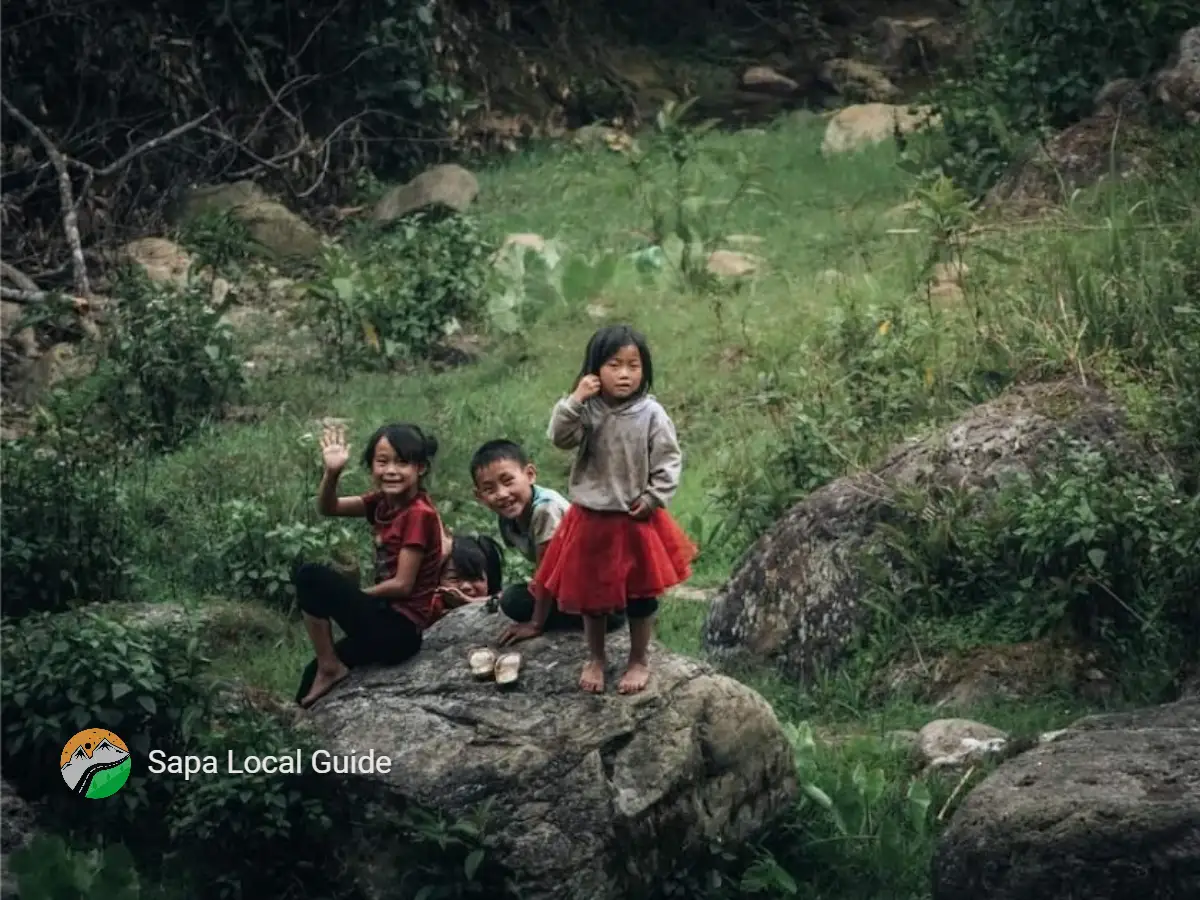
In the heart of Sapa, where emerald hills cradle vibrant communities, solo trekking unveils a journey of profound connection and self-discovery. The trails, rich with stories and breathtaking vistas, beckon the adventurous spirit to explore both the landscape and the soul. Embracing the local culture fosters an unforgettable bond, transforming a solitary expedition into a tapestry of shared experiences. Thus, Sapa stands as an invitation to wanderers, where every step unfolds a narrative waiting to be embraced.
Sapa 1 Day

1 day experience,Rice fields, valley, villages. Moderate to challenging, Private,Vegan-friendlyCultural immersion & active adventure
Motorbike Tour

1 day experience,Rice fields,waterfall.Challenging,Private tours friendly Cultural immersion, active adventure
Sapa 2 Days

2 days 1 night experience. Moderate to challenging, adventure. Mountains, valleys, rice fields and villages. Vegan-friendly
Sapa 3 Days

3 days 2 night experienc, Moderate to challenging. Mountains, valley, rice fields & villages. Private tours. Vegan-friendly
Complete with itinerary, destinations, food, accommodation and tips!
